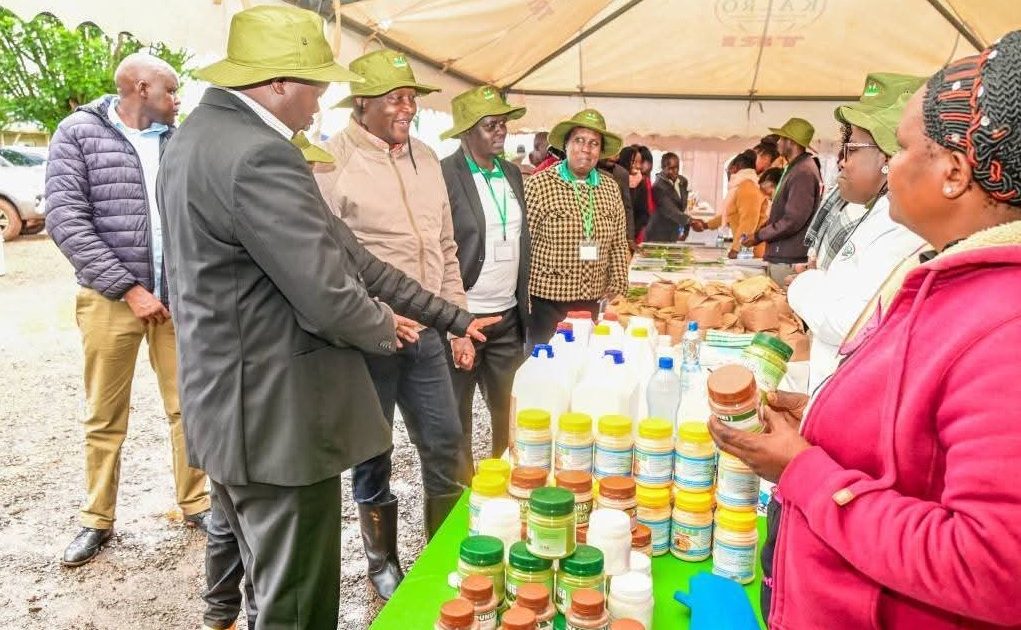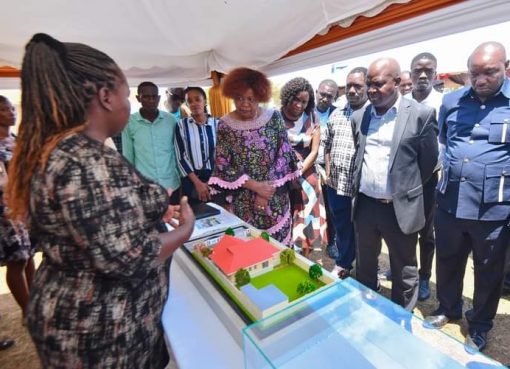Poor management and control of common coffee diseases are to blame for poor production and low quality of cherry.
A plant pathologist working with Coffee Research Institute (CRI) Getrude Alworah has said farmers have to intensify efforts in combating two most destructive diseases that have been affecting coffee production in the country.
Speaking during Coffee Farmers Open Day held in Murang’a on Saturday, Alworah mentioned coffee berry disease (CBD) and coffee leaf rust (CLR) as common diseases that have dwindled coffee production and affected cherry quality.
During the event that brought together agricultural experts, researchers, and coffee stakeholders to equip farmers, Alworah outlined specific ways farmers can employ to curb the spread and damage caused by the diseases.
She explained that coffee berry disease, which is caused by the fungus Colletotrichum kahawae, affects developing berries, leading to black lesions and premature fruit drop.
The scientist added that the disease thrives in cool and wet conditions, especially during the flowering and early fruiting stages.
“The disease is a major cause of low yields among Arabica coffee growers in the country,” she noted.
To combat CBD, Alworah recommended planting disease-resistant coffee varieties such as Ruiru 11 and Batian, which were developed by CRI to withstand attacks from the fungus. “These varieties not only reduce losses but also require fewer chemical inputs, making them suitable for both small- and large-scale farmers,” She added.
“Another key strategy involves timely and proper fungicide application. Farmers are advised to apply copper-based fungicides before the onset of the rains when the disease is most likely to spread,” the scientist continued.
According to Alworah, fungicides should be sprayed at specific stages of berry development to provide maximum protection.
She emphasized the need to follow the right dosage and seek professional guidance for effective results.
Alworah further noted regular pruning and canopy management were also listed as crucial measures.
“Overgrown coffee trees with dense foliage create humid conditions that favor fungal growth,” she stated.
Alworah urged farmers to prune their coffee bushes regularly and manage shade trees to improve airflow and sunlight penetration within the farm, which naturally suppresses disease development.
She observed that field sanitation is equally vital, encouraging farmers to maintain clean coffee fields by removing fallen berries, pruned branches, and other plant debris that may harbor disease-causing organisms.
“Proper disposal of infected plant material reduces the chances of reinfection and disease persistence in the following seasons,” she remarked.
On coffee leaf rust (CLR) which is caused by the fungus Hemileia vastatrix, Alworah warned that it was becoming increasingly common, especially in lower altitude areas.
She noted that CLR causes orange-yellow powdery spots on the underside of coffee leaves, leading to premature leaf fall, reduced photosynthesis, and lower yields.
“Similar to CBD, using resistant varieties like Ruiru 11 and Batian is one of the most effective ways to manage CLR,” she said, adding, “These varieties have been bred to tolerate the rust fungus, and their adoption can significantly reduce the impact of the disease on production. Shade control is also a critical component of CLR management.”
Alworah explained that high humidity, often caused by excessive shading, encourages the spread of rust spores.
Farmers were also advised to manage their shade trees properly by thinning and pruning them to lower humidity and allow sunlight to reach the coffee plants.
Alworah emphasized the importance of walking through the farm at least once a week to inspect for early signs of disease.
“Early detection allows for quick action, such as removing affected leaves or applying targeted treatments before the infection spreads,” she said.
She urged farmers to take advantage of training and extension services, encouraging them to work closely with local agricultural officers and to attend forums like the coffee expo for continuous learning.
The event was seen as a timely intervention, especially as climate change continues to make coffee bushes more vulnerable to diseases.
With the right knowledge and practices, farmers now have renewed hope in restoring productivity and protecting the future of Kenya’s coffee industry.
By Bernard Munyao and Catherine Kamunyo




